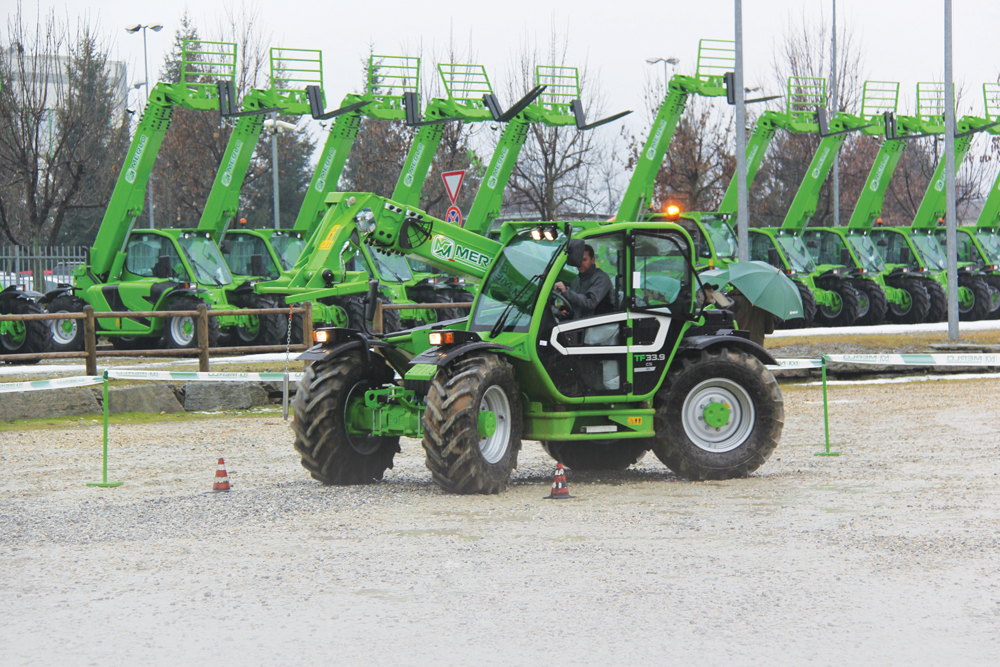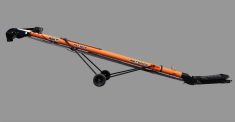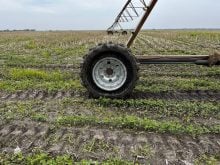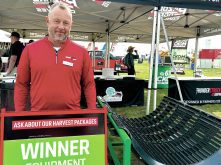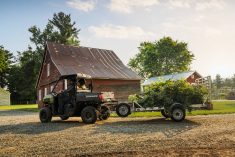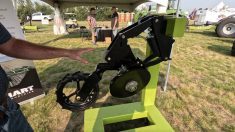As he stood in front of a group of Canadian dealers and customers at his Cuneo, Italy, facility, Amilcare Merlo, owner of the company that produces Merlo telehandlers, explained that his firm was in the midst of a 150 million Euro (C$208 million) reinvestment project. It’s aimed not only at updating the brand’s manufacturing facility, but its product line as well.
“We are investing in tools and machinery in a process that will take two or three years,” he explained. “We’re completely changing the organization (of the assembly plant). I hope we can show a factory at the top of technology.”
Read Also

Claas brings 1000 Series SP forage harvesters to Canada
In mid-August, Claas unveiled its new line of Jaguar forage harvesters at an event in Visalia, California, deep in the heart of that state’s dairy region.
The Cuneo telehandler factory, which sits at the foot of the Italian Alps, will get a major upgrade that includes an increase in automated processes, such as a robot that can hold an entire telehandler chassis and drill all the necessary holes at one station with repeatable precision.
“We think this will be a kind of warranty (on the quality machines produced),” Merlo added.
“Today you can see the investments in terms of products and production,” added his son Paolo Merlo, who is also a senior executive in the firm, as the dealer group was about to head out for a walk through the assembly plant.
A new modular chassis design to be built in the updated plant will allow for a simpler manufacturing process and permit similar systems configurations across all model ranges as part of that major investment.
“We’re renewing all the product range,” explains Fabio Garino, one of the brand’s marketers.
Roughly 87 per cent of the telehandlers built in the Cuneo plant are shipped out of Italy, so export markets are critical to the company. But only about six per cent of those exports are sold in Canada. That’s something the brand’s executives believe will change. They see Canada and the U.S. as major market opportunities for telehandlers. And they think farmers here will eventually be counted among their biggest customers.
Telehandlers have been extremely popular with European farmers, but so far they haven’t caught on in the same way with producers on this continent. To help drive that demand, Merlo now produces two models specifically designed for farm use: the Turbofarmer, which is available in nine different variations, and the Multifarmer, which has four versions, although not all models are yet available in Canada.
The Multifarmers, available with 115- to 156-horsepower, four-cylinder diesel engines, are capable of doing the work of a utility tractor. They come equipped with a mechanically driven rear 540- and 1,000-r.p.m. PTO, which has a modulated engagement feature that eases clutch activation in response to the implement’s inertia. It also gets a Category 3 three-point hitch and rear SCVs connected to either an open- or closed-centre hydraulic system. The Multifarmers also have four-wheel drive.
Altogether, those features let it handle a variety of field chores that would be assigned to a typical farm utility tractor.
But the Multifarmer models also do something utility tractors can’t. They offer a maximum lift capacity of 4,000 kg, and they can raise that load up to nine metres. A standard suspended cab adds to the operator comfort, with an updated interior layout. To keep lifted loads stable, a standard chassis tilt adjustment feature can compensate for uneven ground. The company owner hinted that 4,000 kg load limit might soon be boosted to 5,000 kg in a new model set to debut later this year.
With power routed through the brand’s hydrostatic transmission, the Multifarmers are rated for towing up to 20 tonnes at 40 km/h and have optional rear air-over-hydraulic trailer brake connections.
The turbofarmer is also designed for ag work and offers an available rear PTO. But unlike the Multifarmer, it cannot be ordered with a three-point hitch, which isn’t a problem for many western Canadian farmers. It does, however, offer a feature that makes loading large round or square bales onto trucks much easier. A chassis shift system allows the operator to move the chassis laterally on the axles to make precise lateral boom position adjustments possible.
The company is proud of the fact it designs and produces a high percentage of the components built into each machine, including the axle assemblies. “We’re not just a component assembler,” pointed out one of the marketing staff. And when factory upgrades are complete, the brand expects to increase that in-house percentage.
“Many brands spend money to move production to India or China,” said Merlo. “We prefer to invest in technology.”
Merlo: A timeline
1914: Opening a machine shop, the Merlo family began building various steel components to order for a wide range of customers.
1964: The Merlo brand was founded when the firm began producing its own line of light construction equipment.
1981: Merlo began mass-producing its first telehandler model.
1987: Moving the engine to the side modified the original telehandler design. That lowered the centre of gravity and provided for even weight distribution along with improved vision for the operator.
1996: The first Turbofarmer was introduced.
2000: The Multifarmer with PTO and three-point hitch was released.



